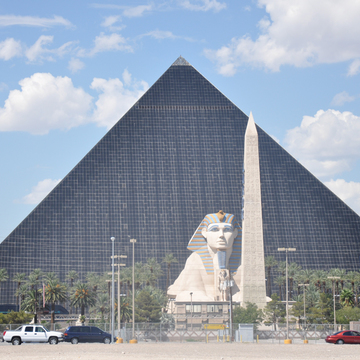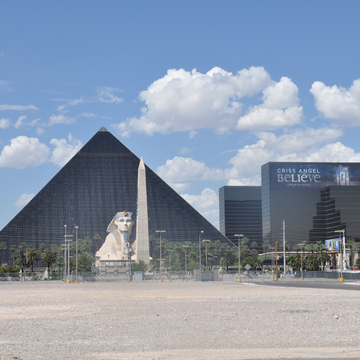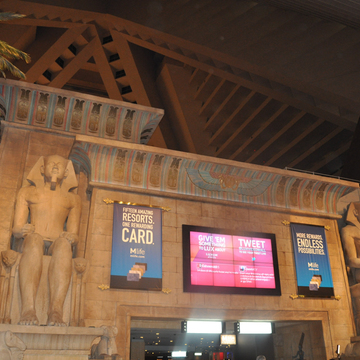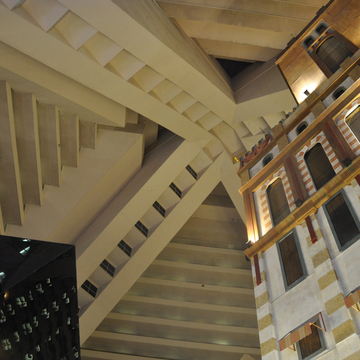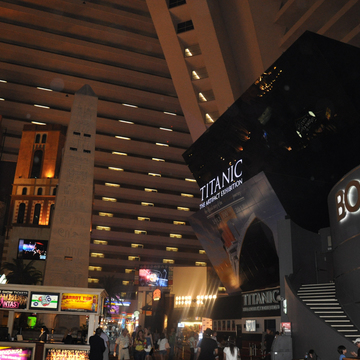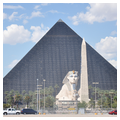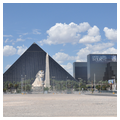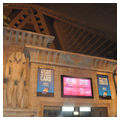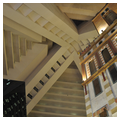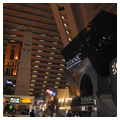Simpson designed this massive black glass pyramid to function as a sign directed less at motorists than at airline passengers. The Strip developed along the highway, but most visitors now arrive in Las Vegas by airplane. Only three blocks from the edge of McCarran International Airport, Luxor can be seen clearly from descending aircraft. The four-sided pyramid is unmistakable by day; laser lights shining from its tip display the building's edges by night. The ancient Egyptian theme is continued on the exterior by an enormous sphinx and, at roadside, an obelisk with the word “Luxor” running down its length.
Here, as in most of Simpson's recent casino designs, a low entry leads to a vast interior. Rooms are located on the perimeter of the pyramid, leaving an immense central space of 29 million cubic feet. The casino fills much of the space, but other attractions, including pylons, porticoes, and, upstairs, a reconstruction of King Tutankhamen's tomb, also provide entertainment. Always expanding, Luxor gained two stepped, pyramid-shaped hotel towers to the north of the main structure in 1996.
Almost thirty years after its construction, Luxor has been updated to better compete with more recently built casinos. A monument to the postmodern themed resorts of the 1990s, Luxor is no longer the largest casino in the city. Although it was originally conceived as a family-friendly destination, it has been remodeled to appeal to a younger and hipper clientele. This has involved removing most of its Egyptian-themed interior, including King Tutankhamen's tomb, the talking mechanical camels, most hieroglyphics, and the faux Nile River water ride. Instead, the cavernous interior atrium is filled with more sophisticated and upscale restaurants, bars, and entertainment venues. The casino and all hotel rooms were also remodeled. The $375 million renovation cost nearly as much as the original building.
While Luxor remains the only casino in the city to have a Sky Beam, even that has diminished in intensity. It is made up of 39 individual xenon lights, each with 7,000-watt bulbs, but has been shining at half strength since 2008 to conserve both energy and money. It can still be seen from the air, but now only from about 100 miles away. However, it is still visible from the nearby airport, luring in a new generation of Las Vegas tourists.
References
Benston, Liz. "The Luxor's New Threads." Las Vegas Sun, July 22, 2007.
"Farewell to Egypt." Las Vegas Review-Journal, July 12, 2007.
Padgetti, Sonys. "Luxor Light Serves as Beacon for Millions of Las Vegas Strip Visitors." Las Vegas Review-Journal, November 18, 2012.








